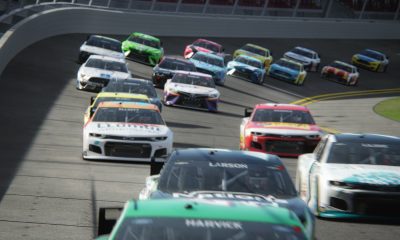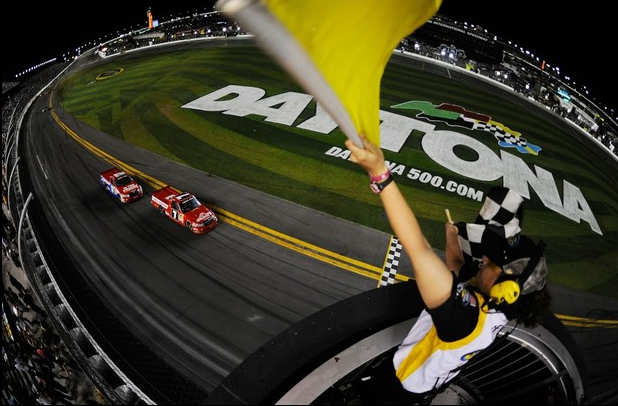The kick-off to every NASCAR season revolves around the Media Tour in Charlotte in Mid-January and this year is no exception. During the tour, a majority of NASCAR’s finest reporters gather to catch up on what NASCAR’s brass have decided to update or change for the upcoming season as well as talks with teams and drivers about the upcoming year.
Excited is what you’ll hear from nearly every driver and if NASCAR has rule changes, a little less than excited is what you may here from the fan base.
As NASCAR Chairman Brian France kicked off the Media Tour with his annual “State Of The Sport” address. Several changes for the upcoming season that revolve around procedure were announced. Most notably, a “20 Minute Clock” for the Camping World Truck Series was announced as a rule that will have a clock starting on the green flag and run for 20 minutes or until a caution falls. You can almost equate this to a shot clock in basketball.
This new “Caution Clock” has many fans on social media saying it’s just another step in destroying the sport by the powers that be. Reaction from this range from this being the worst decision by NASCAR while some would say it is worse than the chase and some fans have called Brian France the “Motorsports Anti-Christ”.
Now there are a select few that are giving it a chance and saying, “Let’s wait this out and see what happens when we get a few races in.”
That would be wise advice.
This sport is very stat oriented. What happened last year, five years ago, or even a decade ago will often have relevance on what happens this year. Just listen to crew chiefs that say they base their fuel strategy on the timing of the average final caution flag from prior years.
The same thing can be said for this clock.
Going off strictly last year’s cautions per race, you may not even notice that the clock is running, especially at the track. A caution may fly and it may just look like your average debris caution.
The Camping World Truck Series ran 22 events that this clock would be used in (Eldora excluded) and in those 22 races, the clock would have been used in seven of the following races:
Atlanta
Martinsville
Texas
Loudon
Las Vegas
Talladega (Caution came out the next lap after the 20 minute clock for an accident)
Texas (Only had one caution, first segment prior to caution wasn’t even 20 minutes)
The average green flag run for these races was 29 laps and 13 minutes of green flag racing. In fact. most green flag runs for the Truck Series throughout the entire season lasts on average 12-14 minutes.
Looking at the details, this rule may be just one that is in place and very rarely mentioned. In case it does come into play, there are a few things that will benefit from it.
The 20-minute clock might actually improve racing. For those that don’t like change and are ready to jump ship, take a life vest because you may need it. The clock will help teams gauge better on tire wear. If it gets to a point where there is a tire concern, teams can balance pushing to the point of risk of failure or knowing that they will make it possibly to the 20-minute mark.
It also brings the possibility of reducing overall cautions for major accidents, tight racing coming to the 20-minute mark guys aren’t forced to push an issue knowing the yellow will wave in a lap or two.
Remember that the tightest racing comes in the first five to 10 laps following a restart. Afterwards, it becomes strung out. This clock will only reduce the possibility of longer single file racing that so many fans say is a reason they might tune out.
Just because it’s new doesn’t mean it’s bad.
We all know NASCAR has been hit or miss on rules changes but this is one that really won’t be noticeable outside of a clock on their screen. We don’t have a confirmation yet from FS1 on whether or not they will place the clock on screen. Jumping ship because it rocks just means you’re swimming while the cruise continues.
20 minutes isn’t that long when you’re having fun but it’s an eternity when laps are flying by at 20 to 30 seconds.














Ashley
January 21, 2016 at 4:42 pm
Let it play out – yet. Is it silly? Absolutely! Cautions bunch up the field and can make for crazy restarts and can prevent runaways like happen too many times to count. Could it mean closer finishes? Sometimes, but certain tracks, like Atlanta or Michigan, the car out in clean air is just GONE in no time. I do not like this, but I will see how it plays out before I reiterate my dislike. =P
Great article Stephen!